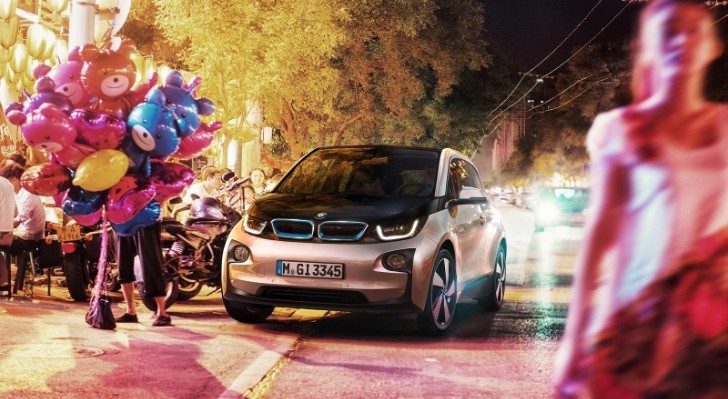BMW has been complaining that they can’t keep up with the demand for the i3 but everyone thought that they were exaggerating to push the envelope further. However, recent signs show that they were actually honest and thing aren’t going exactly to plan.
In the first weeks of production, BMW’s plant in Leipzig, where the i3 is assembled, was making around 7 cars a day. With the demand quickly surging after the car became available, that number went up to 10 cars a day which was roughly a 40 percent increase.
Even so, the production isn’t on par at all. Demand is still quite satisfying and it seems like the problem is now that there is no carbon fiber available to keep on making CFRP.
In case you haven’t been on par with BMW news lately, CFRP stands for Carbon Fiber Reinforced Polymer and it’s a lightweight material that’s used throughout the i3 and i8 models. Basically, in order to keep the weight down, their bodies are made almost exclusively out of this thing.
Due to the recent Asian typhoon, the carbon fiber shipments have been delayed, forcing the Moses Lake plant to slow things down. The problem is, the furnaces over there take a lot of time to be shut down and restarted (somewhere around a couple of days) and can even break down in the process. If that happens, it will take another couple of days to fix things and that’s how you end up losing valuable time and money.
With all these problems at hand, understandably the rate of production for the i3 has been slowed down. Apparently, at the moment, there is a month-long waiting list and it could get even longer.
CFRP production is not the only thing keeping the i3 away from BMW enthusiasts. The EV also uses other innovative materials in its production that can become hard to source at times.
For instance, the leather for the seats is tanned using natural olive extract. However, that precious liquid has been hard to source lately due to slowing production around the world, further adding to the delay in manufacturing the i3.
Hopefully, we won’t see the same problems with the Eucalyptus production as the fast-regenerating wood is used for the dash on upper spec models.
Even so, the production isn’t on par at all. Demand is still quite satisfying and it seems like the problem is now that there is no carbon fiber available to keep on making CFRP.
In case you haven’t been on par with BMW news lately, CFRP stands for Carbon Fiber Reinforced Polymer and it’s a lightweight material that’s used throughout the i3 and i8 models. Basically, in order to keep the weight down, their bodies are made almost exclusively out of this thing.
Eco materials translate into more headaches
Of course, in order to make CFRP you need CF, carbon fiber. The problem is, the whole process of manufacturing the composite is tedious and involves 3 countries directly. First, the carbon fiber is shipped to Moses Lake, the US plant where CFRP is made. Then, the end product is sent to Germany where it is assembled on an i3 or i8 body.Due to the recent Asian typhoon, the carbon fiber shipments have been delayed, forcing the Moses Lake plant to slow things down. The problem is, the furnaces over there take a lot of time to be shut down and restarted (somewhere around a couple of days) and can even break down in the process. If that happens, it will take another couple of days to fix things and that’s how you end up losing valuable time and money.
With all these problems at hand, understandably the rate of production for the i3 has been slowed down. Apparently, at the moment, there is a month-long waiting list and it could get even longer.
CFRP production is not the only thing keeping the i3 away from BMW enthusiasts. The EV also uses other innovative materials in its production that can become hard to source at times.
For instance, the leather for the seats is tanned using natural olive extract. However, that precious liquid has been hard to source lately due to slowing production around the world, further adding to the delay in manufacturing the i3.
Hopefully, we won’t see the same problems with the Eucalyptus production as the fast-regenerating wood is used for the dash on upper spec models.












